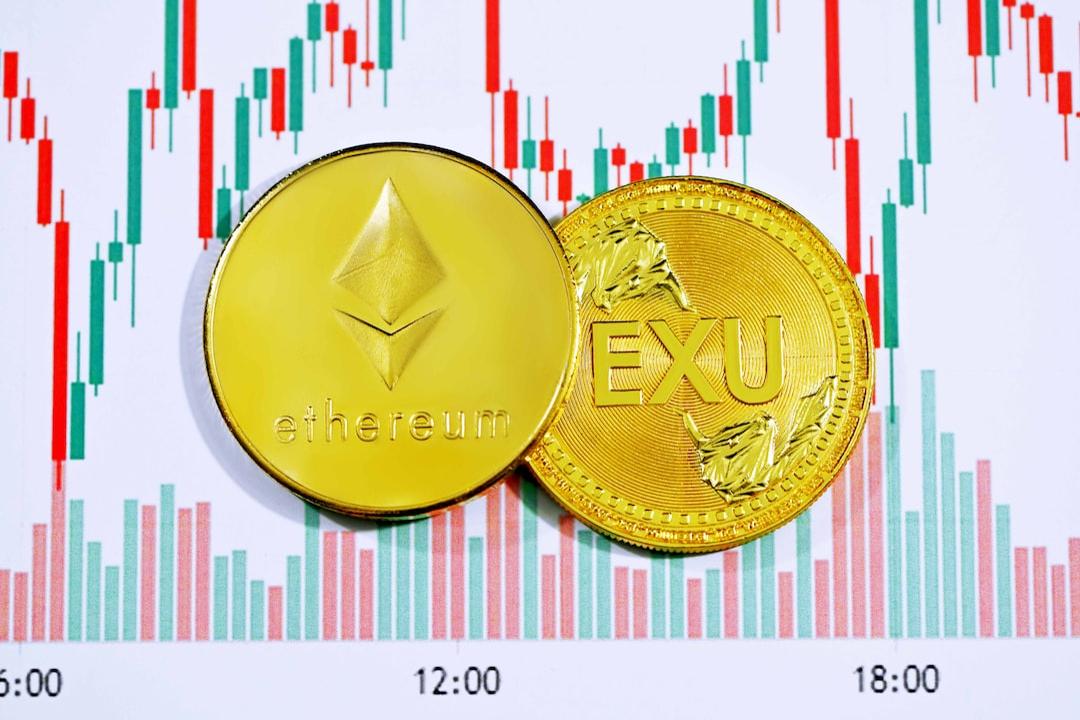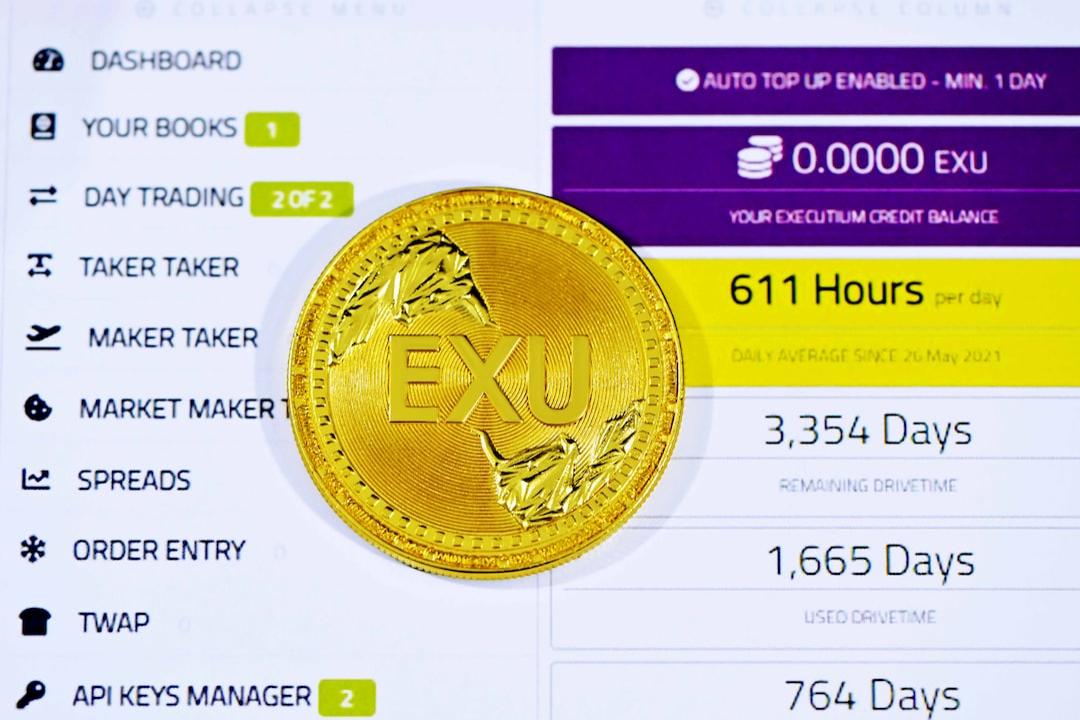Bear Market Explained
A bear market is a term commonly used by investors to describe the current market situation. The following guide will explain what a bear or a down market is, the leading indicators and characteristics, as well as provide some examples. You’ll also learn how bear markets coincide with the market and economic cycles, including which investment strategies are more prevalent during a bear market.
Best Crypto Exchange for Intermediate Traders and Investors
Invest in cryptocurrencies and 3,000+ other assets including stocks and precious metals.
0% commission on stocks – buy in bulk or just a fraction from as little as $10. Other fees apply. For more information, visit etoro.com/trading/fees.
Copy top-performing traders in real time, automatically.
eToro USA is registered with FINRA for securities trading.

30+ million Users worldwide
Get Started
eToro is a multi-asset investment platform. The value of your investments may go up or down. Your capital is at risk. Don’t invest unless you’re prepared to lose all the money you invest. This is a high-risk investment and you should not expect to be protected if something goes wrong. Take 2 mins to learn more.
Understanding a Bear Market
A bear market describes a sustained period of time where stocks, securities, or assets continue to decrease. It’s a market condition where falling prices are caused by economic decline, consumer pessimism, and negative investor sentiment. A bear market is the opposite of a bull market, where prices are increasing.
The term bear or down market is commonly associated with declining prices in stock markets. Still, it can also describe price fluctuations in other highly volatile sectors that are impacted by consumer confidence, such as bonds, real estate, or commodities like gold, oil, or gas.
Two of the most used idiomatic expressions in finance are “bearish” and “bullish.” The phrase “bearish” refers to the downward swiping motion of a bear’s claws and metaphorically downward momentum in the market. In contrast, bulls aggressively thrust their horns upward, indicating the opposite movement in the market; in general, both terms mean price swings in the market as a whole.
Beginners’ Corner:
- What is Investing? Putting Money to Work
- 17 Common Investing Mistakes to Avoid
- 15 Top-Rated Investment Books of All Time
- How to Buy Stocks? Complete Beginner’s Guide
- 10 Best Stock Trading Books for Beginners
- 6 Basic Rules of Investing
- Dividend Investing for Beginners
- 5 Passive Income Investment Ideas
According to the Securities and Exchange Commission (SEC), a bear market occurs when prices fall steeply by 20% or more over at least a two-month period. A decrease between 10% and 20% would mean a market correction phase and a drop between 5% to 10%, a pullback.
Down markets tend to occur during the economic slowdown and rising unemployment, which fuels pessimistic investor sentiment. As people start to worry, they decrease the number of investments or decide to sell their stocks completely. Instead of buying, investors want to sell in exchange for cash or more secure income securities.
It leads to an increase in supply and lowers the demand, causing an oversaturated market and falling stock prices. A declining market is characterized by low investor confidence, declining prices, increased supply vs. demand, and consumer pessimism.

Full-blown bear markets can last anywhere from weeks to months or even years and can be either cyclical or long-term – a full-blown down market is when prices are experiencing prolonged declines that span across several years.
As opposed to bull markets, bear markets tend to be shorter and last for 349 days on average, whereas growing markets can go on for around 1,764 days. The market generally spends more time in a bull phase than a bear phase, meaning that the market or economy is growing more than contracting.
Moreover, bear markets tend to have fewer price fluctuations – bull markets experience an average growth of 180%. In contrast, down markets suffer from a loss of 36%, according to an analysis by Invesco.
What is more, a bear market doesn’t always imply that all asset classes are in the same phases of their respective cycles. For example, stocks can be in a down market, whereas commodity prices can still increase.
As down markets can last anywhere from weeks to years, the length defines the type of a bear market: a secular or a cyclical bear market.
A secular or long-term bear market is a phase where the prices keep declining over a longer period of time, anywhere from 10 to 20 years and are characterized by below-average returns. During this period, bear market rallies may occur, meaning it seems prices are heading towards a bull market, whereas it ends up being a market correction phase in an overall declining market.
A cyclical, or a short-term bear market, on the other hand, is where prices decrease over a shorter time period, over a few weeks or months. Therefore, these are less severe and occur more frequently due to normal market volatility.
A down or a bear market can describe any asset classes affected by the economic cycle that can either gain or lose value over time. All of which are characterized by a cyclical rise and fall in prices across the four economic cycles–expansion, peak, contraction, and through.
The Four Stages of the Economic Cycle
To understand how bear and bull markets work in line with the economic decline, let’s have a look at the four stages of the economic or business cycle, which follow a wave-like pattern, as seen on the graph below.

When investors start to sell at the beginning of a bear market, it can indicate a declining economy and looming recession. The contraction begins after reaching the peak phase, bringing a bear market. Once the economy is in the expansion phase again, a bull market will likely start.
The two terms, a business cycle, and a market cycle are often confused and used interchangeably. However, while the business or economic cycle refers to the economy as a whole, a market cycle describes fluctuations specifically in the stock market.
Therefore, four stages of a market cycle describe increases and decreases in the stock market: accumulation, markup, distribution, and decline. The below graph illustrates these four phases and market fluctuations.

Bear markets follow bull markets, and bull markets follow bear markets, and so on. A continuous decline in prices and a pessimistic economic outlook will result in a bear market.
However, as the economy improves, a turnaround occurs, and investors get more “bullish.” A bear market ends once prices have dropped to a level where they can’t drop anymore, and investor sentiment begins to improve along with consumer confidence. Prices continue to climb, and after stocks gain 20% or more, a bear market is considered over, and a new bull market begins.
Best Crypto Exchange for Intermediate Traders and Investors
Invest in cryptocurrencies and 3,000+ other assets including stocks and precious metals.
0% commission on stocks – buy in bulk or just a fraction from as little as $10. Other fees apply. For more information, visit etoro.com/trading/fees.
Copy top-performing traders in real time, automatically.
eToro USA is registered with FINRA for securities trading.

30+ million Users worldwide
Get Started
eToro is a multi-asset investment platform. The value of your investments may go up or down. Your capital is at risk. Don’t invest unless you’re prepared to lose all the money you invest. This is a high-risk investment and you should not expect to be protected if something goes wrong. Take 2 mins to learn more.
Historical Bear Markets
After some time, markets will reach irrational exuberance, which causes prices to increase excessively and result in overvalued assets. Then investors begin to sell, which causes prices to fall again, creating a seller’s market and bringing a new bear market.
The chart below shows how the stock market has been trading since the 1930’s Great Depression, both in bear and bull market cycles.

However, as markets are in constant flux, the gains and losses can offset each other due to smaller increases and decreases in prices.
Understanding Market Fluctuations
Let’s briefly touch upon these three terms, as they are helpful to know when making your investment decisions. Assuming the market will drop into a full-blown bear can lead to panic, poor decision-making, and early selling of shares. However, price fluctuations in the market are normal and can be less severe.
- A pullback: A drop of 5% to 10% that is only short-term, usually lasting a few days or weeks. It is a normal adjustment phase – a slight deviation from a recent high, while the overall trend remains the same.
- A market correction: Where prices decrease between 10% to 20% and usually last two to four months. These phases are highly volatile and can make investors fear that a bear market is coming and decide to sell. Nowadays, real-time news can intensify these fears, as investors may be impacted by crowd psychology and take preemptive decisions.
- A bear market: Where prices drop by 20% or more and usually last anywhere from months to several years. Investor confidence is already shattered, and money is lost. More and more people begin to sell their stocks to stop further losses; therefore, trading activity declines.
Conclusion: Predicting and Preparing for Bear Markets
No one can precisely predict when we are about to enter a bear market, but there are several tell-tale signs to keep an eye on. Instead of speculating and predicting what will happen in the market in the future, try to ensure an optimal and well-balanced portfolio.
Diversify your portfolio, and ensure you only invest the money you can manage without for the next few years. This way, you don’t have to sell and can ride a bear market out until markets increase and improve again. It is hard to predict the patterns and what can happen in the future, as the sudden onset of the Covid-19 pandemic proved to us.
But through understanding the market trends and general main economic influences, one can better know where to invest, when to invest, and how much to invest. Bearish and bullish behavior reflects how much is also dependent on investor sentiment as if some people begin selling, others will follow.
Finally, create a solid financial plan and de-risk your portfolio to manage your investments better. It will help avoid making any bad decisions based on emotions or taking unreasonable risks based on your fear that the stock market will crash.
Disclaimer: The content on this site should not be considered investment advice. Investing is speculative. When investing, your capital is at risk.
